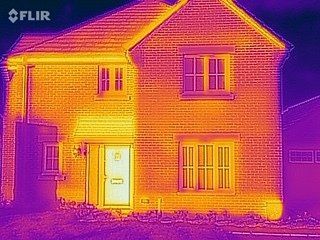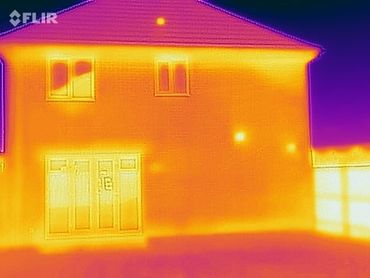Get in touch
info@SnagTheHouse.Com
07402245707
What is a Snagging Survey ?
Having bought yourself your new-build dream home, you understandably want your home to be absolutely perfect. The chances are it will not be, because your home is hand-built and hand-crafted, and even the best of new homes will have teething issues.
Occasionally, there will be disasters, but most problems which will arise with your new-build home are cosmetic and easily sorted, once identified. Identification is the key!
Our snagging surveys are a fresh pair of eyes: expert eyes, ready to identify what exactly needs rectifying. This is the perfect way to pick up the finishing touches which need finishing, fixtures which need fixing and problems which need polishing. A snagging survey is more cost effective, and more relevant than a traditional house buying survey, for a new-build home. Traditional surveys are for older, more settled properties, to check structural aspects. These checks will be already completed and signed off, throughout the build process, by the building inspector, and are covered by your 10 year warranty. A snagging survey is different: it offers you peace of mind, that your home has been built and completed, to an excellent standard, and absolutely meets current building regulations. A snagging survey, therefore, is designed specifically for new-build properties and new extension needs.
Contact us for an free no oblication quote and find out our latest offers
Frequently asked questions
Why should I bother with a Snagging Survey ?
Having chosen a new-build, you have asked your developer to build the home of your dreams. Your home is likely to be the biggest investment of your life, often costing hundreds of thousands of pounds, and a financial commitment for a large portion of your life. Your house is probably going to represent your investment in your future, and maybe the future of your family, or your golden years to come. The snagging survey, therefore, could pick up a serious and costly issue that may be missed or overlooked until your house is out of its warranty period. For personal peace of mind, your snagging survey makes sense, and should be seen as a natural part of your purchasing process, thus money well spent. Your survey could cost as little as £250 depending on the size of your new property. Your snagging survey is based on at least 6 hours of expert time.
When should I have a Snagging Survey?
We recommend you book your snagging survey as soon as you can, once you've moved in to your home.
Most new-home builders offer a standard 7-10 day visit to pick up any snags that you have found. Developers will often only address cosmetic defects that you have pointed out, within this period. Having a Snagging Survey report, to hand to your developer, can aid the process in getting any defects corrected in an agreed time frame. Understandably, developers want positive 8 week NHBC (National House Building Council) survey results (or similar, depending on your warranty provider), so therefore you will have much more bargaining power with your builder at this stage. It will be more difficult as time passes.
Could I have a Snagging Survey done later on?
You can, of course. Technically you can have a snagging survey done at any point during the first two years of living in your new-build home. Your developer must put right any defects reported during this period. It can take longer for issues to be addressed, and it is less likely they will address cosmetic problems as it would be much harder for you to prove when the issues arose. It is also less stressful for defects to be put right, before you live fully in your property.
What will I get from my Snagging Survey?
You will receive an electronic copy of the Snagging Survey report, which you can then forward to your developer. This supports your need for the issues found to be fixed within an appropriate timeframe, ready for you to feel settled in your new home, or for your property to be rentable as soon as possible. Additionally, you will also receive a hard copy of the report to help with de-snagging, (check works done against issues found). We hope this makes this stage of your purchase less stressful.
A snagging survey report includes: photographic evidence, and detailed technical descriptions of defects; thermal imaging* to check for insulation issues; remedy recommendations and on-going support if needed;
What happens after two years?
Please remember some defects might not become apparent until you've been living in your home for a while. Our Snagging Survey, obviously, cannot pick up defects which develop with time. From the day you move in, however, your developer has a duty to resolve any defects that could appear in the first two years.
Your developer should provide you with contact details for their customer service department.
Once you've lived in the property for more than two years and if you notice something major is wrong, you can make a claim under the 10-year warranty, which covers building defects on new-build homes. Most warranty providers also provide a resolution service that you can use, if you have a dispute with your developer over problems with your home.
When else would a snagging survey be beneficial?
A snagging survey is also very useful for an extension on your established property, or any major renovation project.
Snagging services are ideal for property investors too. It is much better for a snagging service to find that your new buy-to-let has significant faults, than it is for your new tenant to find them! It protects you, your property, and your relationship with your tenant.
Is it too late to have a snagging survey?
If you have already moved in, and are having snagging issues with your builder or developer, then a professional snagging report can help support your request for work to be rectified. Contact us to discuss how we can help.
What is Thermal Imaging ?
The level of thermal radiation emitted by your house is called its heat signature. The hotter an area is, the more radiation it will spill into the environment. Thermal imaging is capable of distinguishing heat sources and very small differences in thermal radiation. This will show where the insulation failling

